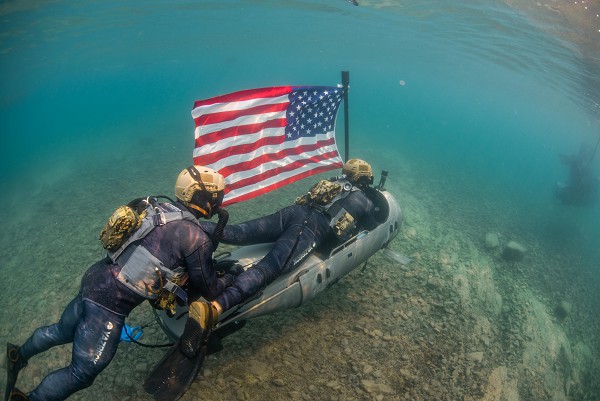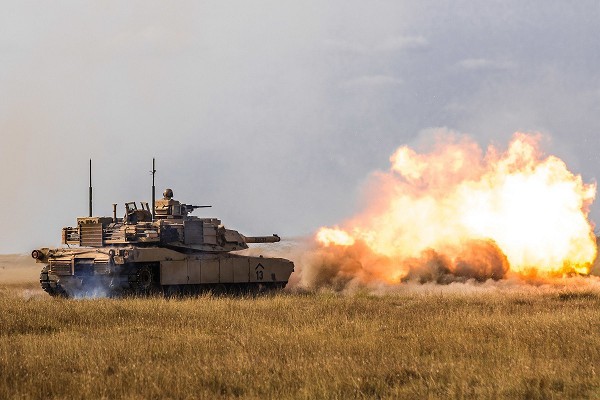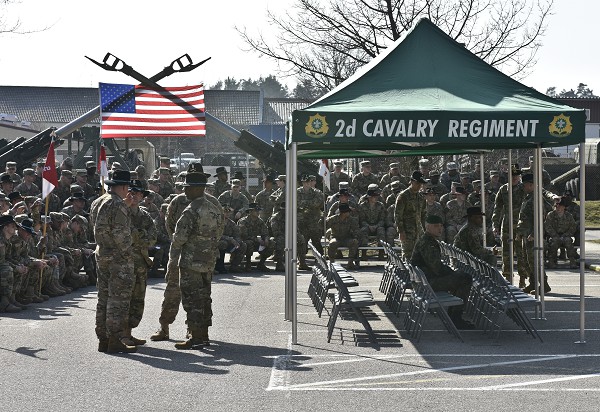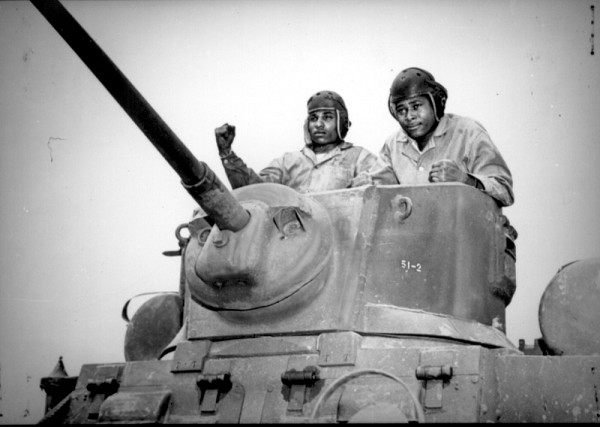- Details
- Hits: 1235
 NORTHERN CALIFORNIA (Sept. 9, 2022): In this photo by MC2 Alex Perlman, Sailors assigned to Naval Special Warfare command operate a diver propulsion device while training at high altitude. The Navy’s dive program has a long and colorful history which began in WWII with the Normandy Invasion and continues today as a vital component of U.S. special operations around the world.
NORTHERN CALIFORNIA (Sept. 9, 2022): In this photo by MC2 Alex Perlman, Sailors assigned to Naval Special Warfare command operate a diver propulsion device while training at high altitude. The Navy’s dive program has a long and colorful history which began in WWII with the Normandy Invasion and continues today as a vital component of U.S. special operations around the world.
NORTHERN CALIFORNIA (Sept. 9, 2022): As the allies were developing plans for the Normandy Invasion, it was clear that an unconventional force was needed to conduct beach reconnaissance of the potential landing zones prior to sending thousands of men ashore. In 1942, a group of Army and Navy personnel were assembled to identify and reconnoiter beach landing sites and to guide the assault waves as they landed on the French coast. Called Scouts and Raiders, these early “frog men” would go on to support landings on beaches in North Africa and in Sicily, Salerno, and Anzio on the Italian coast.
The first group of these unconventional warriors was led by Phil H. Bucklew, the “Father of Naval Special Warfare”, who is credited with consolidating the Navy’s special operations units, including the SEALS, under one umbrella. Beginning with the Normandy landings where he evaded German patrols to scout Omaha Beach, Bucklew’s military career continued through Korea and Vietnam, and he was awarded the two Navy Crosses and a Silver Star for his service.
Today’s Naval Warfare School, based at the Naval Amphibious Base, Coronado, California, trains the Navy SEALS in underwater demolition, covert insertion, and reconnaissance. These superbly trained warriors go ashore with assault boats, erect markers for incoming craft, blow up beach obstacles and maintain communications with the troops ashore.
Read more: NAVAL WARFARE SCHOOL; THE HEART OF SPECIAL OPERATIONS TRAINING
- Details
- Hits: 1034

National, 11-29-2022 - A big shout-out to the great American snack food company Snyder-Lance for their generous donation of seven pallets of Archway Molasses Cookies to the deployed troops! With yellow ribbon care package goods like this the troops are well on their way to their best Christmas ever! Care package shipments are furious! Thousands of troops are on the move, and they are being well supplied with love from the folks at home thank to people and companies like Snyder-Lance. Good job America!
T’was a month before Christmas and all through the land
American’s were whirring, not one of them groused
To the troops they were sending goods both big and goods small
Making sure that this Christmas the troops would stand tall.
- Details
- Hits: 1057
 Arlington, VA. (November 14, 2022): In this photo by Monica King, U.S. Army Staff Sergeant Clinton L. Romesha poses for an official portrait as a Medal of Honor recipient at the Army Portrait Studio at the Pentagon, Arlington, Virginia. SSgt. Romesha was awarded the Medal of Honor for actions while serving as a section leader with Bravo Troop, 3rd Squadron, 61st Cavalry Regiment, 4th Brigade Combat Team, 4th Infantry Division, during combat operations against an armed enemy at Combat Post Keating, Kamdesh District, Nuristan Province, Afghanistan.
Arlington, VA. (November 14, 2022): In this photo by Monica King, U.S. Army Staff Sergeant Clinton L. Romesha poses for an official portrait as a Medal of Honor recipient at the Army Portrait Studio at the Pentagon, Arlington, Virginia. SSgt. Romesha was awarded the Medal of Honor for actions while serving as a section leader with Bravo Troop, 3rd Squadron, 61st Cavalry Regiment, 4th Brigade Combat Team, 4th Infantry Division, during combat operations against an armed enemy at Combat Post Keating, Kamdesh District, Nuristan Province, Afghanistan.
Arlington, VA. (November 14, 2022): Isn’t it surprising that heroic deeds are often done by ordinary people, regular Americans who suddenly find themselves in life threatening situations. It would seem a natural thing to panic, run away, or take cover to protect yourself. Some folks simply do the opposite, as if by instinct, calmly, and with iron determination. They seem to totally disregard their own safety while committing incredible acts of gallantry. Extraordinary.
SSgt. Clinton Romesha (pronounced Row-ma-shay) was one such individual. Born in Lake City, California, he joined the Army as an M1 Abrams Armor Crewman and trained at the “Home of Armor”, Fort Knox, Kentucky. Upon graduation, he rose quickly through the ranks to become a Section Leader while serving stints in Korea and two deployments to Iraq and Afghanistan.
On the day in question, Combat Outpost Keating came under attack by enemy forces estimated at 300 Taliban fighters occupying the high ground above his position on all sides. The enemy attacked with concentrated rounds from B10 recoilless rifles, rocket propelled grenades, heavy machine guns, and mortar fire.
- Details
- Hits: 1058
 Smardan, Romania. (November 16, 2022): In this photo by Sergeant Dommnique Washington, an American M1 Abrams main battle tank participates in live fire exercises with NATO ally Romania outside the town of Smardan. Since the illegal invasion of Ukraine, allied armored forces have poured into Romania, Poland, and Bulgaria along with thousands of servicemembers who will spending this holiday away from home.
Smardan, Romania. (November 16, 2022): In this photo by Sergeant Dommnique Washington, an American M1 Abrams main battle tank participates in live fire exercises with NATO ally Romania outside the town of Smardan. Since the illegal invasion of Ukraine, allied armored forces have poured into Romania, Poland, and Bulgaria along with thousands of servicemembers who will spending this holiday away from home.
Smardan, Romania. (November 16, 2022): They are the flower of America. Young, idealistic, dedicated, and willing to give of themselves so that others may be safe. They readily accept hardship, loneliness, and separation from their families while they perform dangerous and exhausting jobs to defend our country.
In the photo above, U.S. troops train with the NATO ally Romania to prepare to defend Europe, and the world, against Russian aggression. Right now, a 1,000 member Army Stryker squadron is joining roughly 900 U.S. servicemembers already in country and, according to the Pentagon, more are to follow in the coming months.
In Poland, America has over 10,000 American servicemembers serving in armor brigades with over 800 Abrams main battle tanks, combat aviation units, and dozens of support functions at bases across the country. For many, this is their first overseas deployment away from home.
In addition to ground forces, U.S. Navy and Marine units regularly patrol the Baltic Sea. The Navy now has 28 U.S. warships deployed to Europe including the amphibious warships USS Kearsarge, USS Gunston Hall, and the USS Gravely along with elements of the 22nd Marine Expeditionary Unit already in the Baltic. Plans call for an even greater U.S. naval presence soon, just in time for the holidays. The Air Force likewise is sending thousands of airmen to deploy America’s 5th generation fighters to support NATO.
- Details
- Hits: 10451

Vilseck, Germany. (November 15, 2022): Operation Desert Storm, the war ordered by President H.W. Bush to oust invading Iraqi forces from Kuwait, had begun in earnest.
On the night of February 23, 1991, American General Norman Schwarzkopf executed his ground assault against entrenched Iraqi Divisions by sending the U.S. VII Corps sweeping into Iraq in a wide hooking maneuver. Later described by Schwarzkopf as a "Hail Mary”, the lead U.S. unit in the battle would be the 2nd Armored Cavalry Regiment, a 4,500 soldier armor and reconnaissance team whose mission was to locate and fix enemy positions ahead of the Army’s 1st Infantry Division.
American forces were equipped with the world’s most advanced tank, the M1A1 Abrams, backed up by the powerful Bradley Fighting Vehicle. Despite being equipped with a much smaller 25mm “Bushmaster” cannon, the Bradley was outfitted with tube-launched, optically tracked, wire-guided (TOW) missiles capable of destroying armor.
The Iraqi Republican Guard and its Tawakalna Division were dug in, taking defensive positions near grid coordinate “73 easting ”, a GPS line used as a location as there are no geographic landmarks in the desert. These were Saddam Hussein’s crack troops equipped with aging Soviet T-72s and T-62s and they were ready for a fight.
Read more: BATTLE OF 73 EASTING THE BIGGEST TANK BATTLE SINCE WWII
- Details
- Hits: 1664
 Fort Hood, TX. (November 19, 2022): In this photo from the National Archives, two African American soldiers with the 761st Tank Battalion, better known as the Black Panthers, train for combat in Europe aboard the M5 Stuart light tank. The Black Panthers would endure a record 183 days in combat and would liberate 30 towns on their campaign through Germany in World War II.
Fort Hood, TX. (November 19, 2022): In this photo from the National Archives, two African American soldiers with the 761st Tank Battalion, better known as the Black Panthers, train for combat in Europe aboard the M5 Stuart light tank. The Black Panthers would endure a record 183 days in combat and would liberate 30 towns on their campaign through Germany in World War II.
Fort Hood, TX.. (November 19, 2022): They were not welcome to eat at restaurants in their hometown. They would train separately from their white comrades and their leaders were hesitant to give them a chance in combat. They were the U.S. Army’s 761st Tank Battalion, better known as the “Black Panthers”, and they plowed through prejudice and segregation to play a major role in turning back the Germans at the Battle of the Bulge.
Their story begins with an executive order issued by President Franklin D. Roosevelt giving African Americans the chance to volunteer for military service. The 761st was formed in 1942 and would train at Fort Hood, Texas on the M4 Sherman, and M5 Stuart light tanks. They trained for over two years, mostly because Army commanders were not willing to give these soldiers a chance to prove their worth in combat. When they finally landed in Normandy, the Black Panthers were eager to show they were as good, or better, than their white comrades.
The 761st was assigned to General George Patton’s Third Army and would be the first African American tankers to see combat in U.S. history. The Black Panthers would participate in four campaigns in six countries before playing a major role in the relief of the 101st Airborne Division at Bastogne during the Battle of the Bulge. The Black Panthers would go on to be one of the first U.S. battalions to meet up with Soviet Forces, thereby splitting the remnants of the German Army and hastening the end of the war.
Read more: ARMY “BLACK PANTHERS” CHARGED ACROSS EUROPE IN WW II
- “WE DON’T WALK… AND WE DON’T SLEEP IN THE RAIN.”
- Salute To WWII Vets… MARINES WHO FOUGHT AT IWO JIMA HONORED IN HAWAII
- MEKONG DELTA A TRUE TEST OF AMERICAN RIVER TACTICS
- U.S. SENDING RIVERINE CRAFTS AND KNOWLEDGE TO UKRAINE
- RIVER OPERATIONS CRITICAL TO AMERICAN VICTORY
- INTERNATIONAL STUDENTS TRAIN IN RIVERINE OPERATIONS


